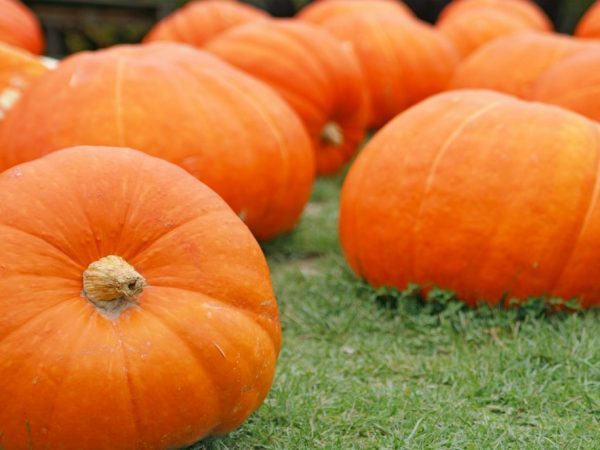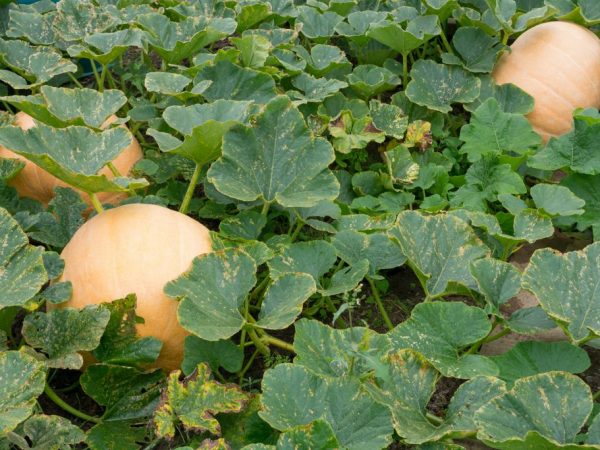Varietal characteristics of the Hundred Pound Pumpkin
The medium-ripening culture - the Hundred-Pound Pumpkin - is one of the most popular among gardeners. It is known for its large fruit size and ease of maintenance. Unlike other varieties, rotting is rare. The garden culture is distinguished by its high yield and excellent taste of the ripe product.

Varietal characteristics of the Hundred Pound Pumpkin
Description of the variety
High resistance to diseases makes this pumpkin versatile and in demand. The variety is distinguished by its high yield: up to 6 kg of product can be harvested from one square meter. It also differs in increased keeping quality.
The variety ripens outdoors or in a cool room. The whole fruit is well stored and can be used until spring.
In general terms, the variety is characterized by:
- high transportability - thanks to this, the crop is often grown for sale;
- high sugar content in fruits, which provides them with a pleasant taste;
- frequent use in cooking: a delicious product is used to prepare various dishes - it can be eaten raw, boiled or baked;
- hard peel.
Bush signs
The foliage is green with small veins. The surface is uneven, not smooth. The foliage is wide. Peduncle description: medium in size and firm. The culture is distinguished by a large seed nest. Long and moderately thin lashes curl around it.
The bush is distinguished by its rapid growth: the lateral stems grow on the sides up to a meter.
For this reason, growing the Hundred Pound Pumpkin is challenging, such as not planting too densely.
Vegetable characteristic
The variety is distinguished by its large crop size. This pumpkin is not just large-fruited - if you take care of it correctly, 2-3 giant fruits appear on the bush at once.
Vegetable segmentation is weak, almost imperceptible. There are very smooth fruits of the variety. They are spherical and large in size. The larger the fruit, the brighter its color. The largest vegetables are bright orange in color. Fruits with a gray or green skin are less common: they are small and unripe vegetables.
Growing conditions determine the taste of the product. Description of the pulp: white-yellow color, friable structure. The denser the pulp, the more neutral the taste. Only orange vegetables are juicy and sweet. They are grown with good watering and fertilization.
Growing a vegetable
Do not plant pumpkin in lowlands or areas that are often flooded. The culture is unpretentious to the neighborhood - it gets along well with corn and pumpkin plants. The high biological activity of the product is due to the way it is seated: the pulp is formed from cracked placentas.
Large-fruited pumpkin One-pound needs a lot of sun. It is better to choose well-lit areas for growing it.
The variety is planted only in the spring. They choose a period when frosts are excluded - the culture will not survive a sharp cold snap.

The plant needs good lighting
Planting is calculated from the growing season, which occurs in mid-autumn: it is better to harvest in September. The later the sowing, the less tasty the pulp is.
The planting density determines the size of future fruits. Standard layout: 140 cm long and wide. The greater the distance between the seeds, the more space there will be for the growth of the vegetable: the variety grows quickly, so you cannot save on free space.
Planting seeds
Large-fruited pumpkin is planted from seed. They are stored in a dry and warm room. Those of them that are at least 2-3 years old are used. Place 2-3 seeds in one hole. The first shoots appear after 5 days.
After that, one or two extra plants are cut off - they will only interfere with the growth of the main bush. It is impossible to pull out an extra shoot by the root, because the main rhizome can be damaged. Immediately after sowing, the seedlings are watered, and the next irrigation occurs no earlier than a week later.
Plant care
Care depends on the composition of the soil. If it has a high density, the upper soil layer is periodically loosened. Before planting, all old roots and weeds are removed from the ground. The cleaner the soil, the faster the crop will germinate.
Fertilizers are mandatory. The first layer is laid before planting, the second - 2-3 weeks later. Organic and mineral feeds are used.
It is better to introduce organic matter in the fall as the main care. Manure has a beneficial effect on the quality of the stems and strengthens the root system. Manure substitutes are compost, humus and ash.
Watering
Giant pumpkin care is carried out with watering. Even in regions with frequent rains, ripening fruits need additional nutrition. The vegetable is rarely watered, but abundantly - use at least 2 buckets at a time.
Pour the liquid under the root. During the pollination period, excessive moisture should not be allowed to enter the ovary. It is better not to irrigate ripe fruits once again. They will pick up nutrients from the root system on their own.
If you do not stop watering before harvesting, the pulp will be watery and tasteless. The best option is watering during the active growth of the bush.
Testimonials
Growing pumpkins is a fairly simple process, according to gardeners. Most of them sow the crop because of its unpretentiousness. Even without additional watering, the giant vegetable gives a stable harvest.
According to the advice of experienced gardeners, recharge is applied during active growth - this is one of the secrets of how to get a large and tasty vegetable. The nutrient-rich environment ensures a good harvest. It is also important not to delay the preparation of the seeds. If they are not planted in time, it will not be possible to harvest before frost.
Reviews of the Hundred Pound Pumpkin are only positive: it rarely gets sick and grows quickly without much effort on the part of a person. The culture is well experienced in the neighborhood with other plants. After harvesting, the soil is not depleted and is suitable for further planting.

